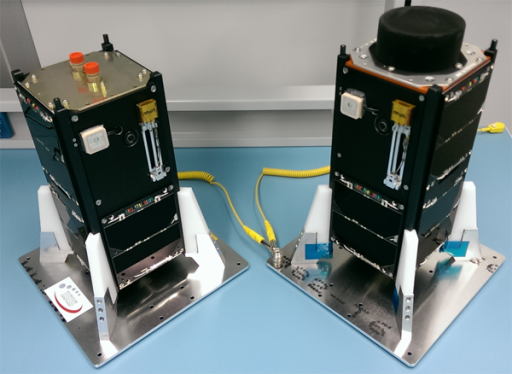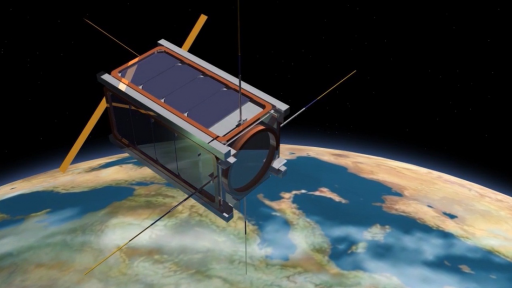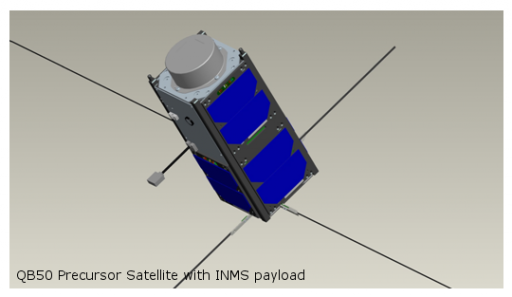QB50

QB50P1 and QB50P2 are two precursor satellites to the QB50 project that will launch a network of 50 satellites by a team of 15 universities and institutions around the world. The goal of QB50 is to demonstrate that a wealth of CubeSats can be launched by a low-cost launch vehicle to establish a constellation of scientific spacecraft in Low Earth Orbit enabling thermospheric science. The project will demonstrate the harmonization and coordination between many participating institutions and also establish an unprecedented scientific satellite constellation for in-situ measurements within the thermosphere, a zone that is hardly accessed by any other spacecraft for dedicated measurements.
Three different types of scientific payloads will eventually be part of the QB50 spacecraft consisting of an Ion-Neutral Mass Spectrometer (INMS), the Flux-Φ-Probe Experiment and multi-Needle Langmuir Probe (m-NLP). These payloads will be combined with thermistors and thermocouples.

The two precursor satellites will conduct demonstration mission as part of the risk reduction process for the whole QB50 project. The deployment System consists of a 3U QuadPack that has a total of 12-Units of launch capacity in 4 individually controlled launch-tubes and the associated deployment sequencing electronics. Using the deployment system on the precursor flight provides flight heritage as it goes through a ground-processing flow and an actual launch operation.
The satellite platform and instruments will also undergo risk reduction as the spacecraft are put through six months of rigorous testing in orbit that can expose any shortcomings in systems performance before the operational constellation is launched.
The QB50P1 satellite is a 2U CubeSat that is hosting the INMS payload from MSSL, the attitude determination and control system from SSC, the Thermocouple experiment from VKI and an AMSAT-NL transponder. The INMS (Ion-Neutral Mass Spectrometer) measures dominant species in the thermosphere such as atomic oxygen, molecular oxygen, nitrogen and nitrous oxide. The instrument also provides density and temperature measurements. INMS includes an ion filter, an ionizer unit and an electrostatic analyzer with an energy range of 0.1 to 28eV. The instrument achieves an elevation resolution of 5° and an azimuth resolution of 5° at a sample time of 4ms and energy resolution of under 3%.

The QB50P2 satellite is also a 2U CubeSat with a launch mass of 2 Kilograms. It is identical to the QB50P1 satellite except for using the FIPEX (Flux-(Phi)-Probe-Experiment) instrument instead of the INMS.
The FIPEX microsensor uses a gold cathode for non-dissociative reactions to detect atomic oxygen and a platinum anode for dissociative adsorption to detect atomic and molecular oxygen. The sensor system is 36 by 30 by 12 mm in dimensions and offers a field of view of about 180 degrees. The electronics unit controls the instrument and handles data coming from the two sensors to generate time resolved data for the measurement of oxygen and correlation to atmospheric models.
In addition to the standard instruments, the two satellites also host an amateur radio terminal operating in the VHF/UHF bands. After six months of rigorous testing, the satellites will be handed over to the amateur radio community for continued operation.
